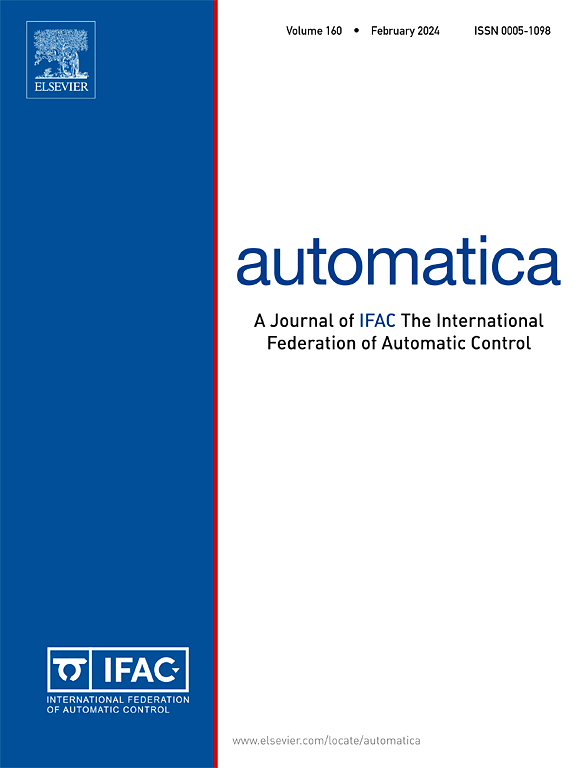A control theoretical approach to online constrained optimization
IF 4.8
2区 计算机科学
Q1 AUTOMATION & CONTROL SYSTEMS
引用次数: 0
Abstract
In this paper we focus on the solution of online problems with time-varying, linear equality and inequality constraints. Our approach is to design a novel online algorithm by leveraging the tools of control theory. In particular, for the case of equality constraints only, using robust control we design an online algorithm with asymptotic convergence to the optimal trajectory, differently from the alternatives that achieve non-zero tracking error. When also inequality constraints are present, we show how to modify the proposed algorithm to account for the wind-up induced by the nonnegativity constraints on the dual variables. We report numerical results that corroborate the theoretical analysis, and show how the proposed approach outperforms state-of-the-art algorithms both with equality and inequality constraints.
在线约束优化的控制理论方法
本文主要研究具有时变、线性等式和不等式约束的在线问题的解。我们的方法是利用控制理论的工具设计一种新颖的在线算法。特别地,在只有等式约束的情况下,我们利用鲁棒控制设计了一种与实现非零跟踪误差的备选方案不同的、能渐近收敛到最优轨迹的在线算法。当还存在不等式约束时,我们展示了如何修改所提出的算法以解释对偶变量的非负约束引起的缠绕。我们报告了证实理论分析的数值结果,并展示了所提出的方法如何优于具有相等和不等式约束的最先进算法。
本文章由计算机程序翻译,如有差异,请以英文原文为准。
求助全文
约1分钟内获得全文
求助全文
来源期刊

Automatica
工程技术-工程:电子与电气
CiteScore
10.70
自引率
7.80%
发文量
617
审稿时长
5 months
期刊介绍:
Automatica is a leading archival publication in the field of systems and control. The field encompasses today a broad set of areas and topics, and is thriving not only within itself but also in terms of its impact on other fields, such as communications, computers, biology, energy and economics. Since its inception in 1963, Automatica has kept abreast with the evolution of the field over the years, and has emerged as a leading publication driving the trends in the field.
After being founded in 1963, Automatica became a journal of the International Federation of Automatic Control (IFAC) in 1969. It features a characteristic blend of theoretical and applied papers of archival, lasting value, reporting cutting edge research results by authors across the globe. It features articles in distinct categories, including regular, brief and survey papers, technical communiqués, correspondence items, as well as reviews on published books of interest to the readership. It occasionally publishes special issues on emerging new topics or established mature topics of interest to a broad audience.
Automatica solicits original high-quality contributions in all the categories listed above, and in all areas of systems and control interpreted in a broad sense and evolving constantly. They may be submitted directly to a subject editor or to the Editor-in-Chief if not sure about the subject area. Editorial procedures in place assure careful, fair, and prompt handling of all submitted articles. Accepted papers appear in the journal in the shortest time feasible given production time constraints.
 求助内容:
求助内容: 应助结果提醒方式:
应助结果提醒方式:


